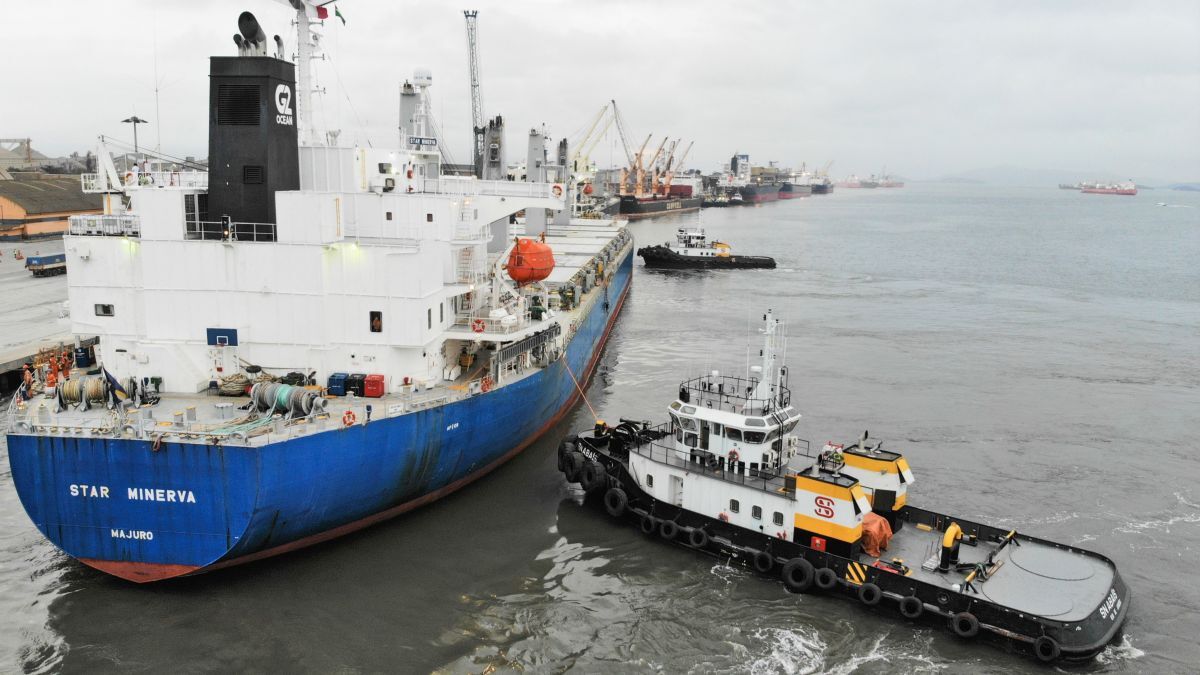Sulnorte has ordered 11 tugs to enhance towage capabilities to meet rising ship-handling demand
Sulnorte has come through an extremely challenging period, due to the global Covid-19 pandemic, to set bold goals for fleet expansion.
It is committed to developing its tugboat fleet to meet rising demand in Brazilian ports and achieving sustainable operations through lower fuel consumption.
“We have expanded our operations by offering our customers coverage from Rio Grande to Santarém,” says Sulnorte commercial manager Arthur Souto, “operating not only in the most traditional port complexes in Brazil, but also in important ports in the north of the country, significantly extending our operations in the harbour towage market.”
Sulnorte currently operates 24 tugs, which have a 98% availability rate, and covers 10 port complexes: Rio Grande, Porto Alegre, Paranaguá, Santos, Vitória, Salvador, Madre de Deus, Maceió, Vila do Conde and Santarém.
Sulnorte’s expansion plan is based on constructing new tugboats, importing equipment at the start of new contracts and chartering vessels.
“We currently have time-charter contracts with partner companies, which helps us to expand our activities and reduce operating costs,” says Mr Souto.
Construction is underway on new harbour tugs in Brazil for Sulnorte’s expansion plans. It has one azimuth stern drive tug being built to Robert Allan Ltd’s RApport 2400 MKI design, with 60 tonnes of bollard pull, due for delivery in Q3 2023.
“We also have a project to build 10 tugs of the RAmparts 2500 class, with 75 tonnes of bollard pull,” says Mr Souto.
“This project is focused on supporting port operations, constructingvessels with a more compact size and power, and bollard pull suited to the most varied demands of port support activities,” he explains.
These tugboats will have lower fuel consumption and more optimised operations than its existing tugs. “We are always allowing for agile and effective performance in ports where there is high traffic,” says Mr Souto. “Operating costs, conservation and maintenance are optimised in this sustainable and efficient project.”
Port expansion and growth in demand for ship manoeuvring is partially driven by rising shipments in iron ore and agribusiness.
“The reception of larger ships in Brazilian ports requires, in some cases, a greater number of high-power tugs,” says Mr Souto. This includes more goods shipped on container ships and agricultural products on Panamax and Capesize ships which has congested ports, such as Santos, Paranaguá and Rio Grande.
There have also been more Handysize ships transporting cargo related to the oil and gas market. Mr Souto says Sulnorte’s “fleet is fully adequate, both quantitatively and qualitatively, to meet these operations.”
Sulnorte has invested in new software to help it to collect information related to the ports in which it operates.
“Through the constant analysis of this data, it is possible to deliver a better level of service,” says Mr Souto. “We have an operations centre that attends to all demands in the ports and their surroundings where we operate 24/7.”
He says Sulnorte tugboats are suited for berthing and undocking ships in the various ports in which they operate. It also has vessels for ocean and project towage.
Sulnorte is always searching for new business opportunities and has strategic partnerships with international brokers.
Mr Souto says one of its goals is to consolidate operations in the port complex of Vila do Conde, in Pará. Another highlight of Sulnorte’s operations is in Lagoa dos Patos, an area that historically suffers from silting and draught restrictions, in the south of Brazil.
“These events, sometimes isolated and other times combined, inconvenience the carriers that navigate in the region,” he says.
“We contributed significantly so that countless loads could arrive in Porto Alegre, preventing the most critical point of this crossing from becoming a bottleneck, or even becoming completely unfeasible. This work was carried out through regularly monitoring the ships that sail there.”






